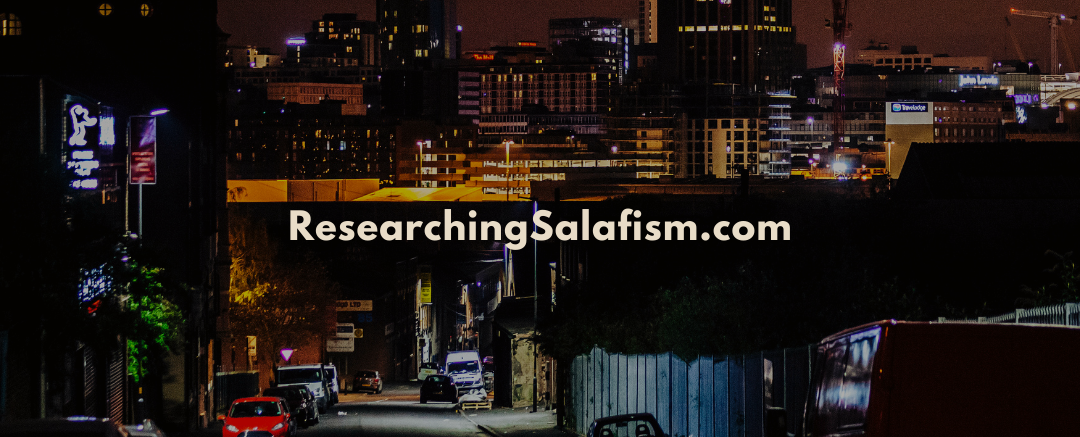
Muslim heritage (MH) Salafi converts comprised the largest section of my cohort: there were 19 in total, and more ethnically and nationally diverse than their NMH counterparts. Here too, the nature and extent of religious experience before conversion was closely bound to a convert’s sociocultural heritage and current status in society. Furthermore, all MH respondents were either first-, second-, third- or fifth-generation Muslims who had migrated to Birmingham from within the UK, Continental Europe (France; Greece; Spain; Switzerland; and Denmark) or elsewhere (Malaysia; Caribbean Islands; Singapore; Indonesia). The following table reflects the split of MH converts into three further categories.
TABLE 5.4 National & Ethnic Origin of Muslim-Heritage Converts to Salafism out of 30.
| Total number of MH converts | 19 |
| British: Pakistani/Pakistani-Ugandan/Kenyan; Bangladeshi; Gujarati; Indonesian; Singaporean; Malaysian (mixed race) | 10 |
| European: (Continental): French Moroccan/Algerian; Spanish-Moroccan; Greek-Moroccan; Swiss-Pakistani; Danish-Somali | 7 |
| Other: Malaysian; Indo-Caribbean | 2 |
TABLE 5.5 Age Structures of Muslim-Heritage Converts to Salafism out of 30.
| Ages | British* | Continental-European | Other |
| 25-29 | 1 | 0 | 0 |
| 30-34 | 4 | 4 | 1 |
| 35-39 | 1 | 0 | 0 |
| 40-44 | 2 | 2 | 1 |
| 45-49 | 1 | 0 | 0 |
| 50-54 | 0 | 0 | 0 |
| 55-59 | 0 | 1 | 0 |
| 60-70 | 1 | 0 | 0 |
*British: Pakistani/Pakistani-Ugandan/Kenyan; Bangladeshi; Gujarati; Indonesian; Singaporean; Malaysian (mixed race)
The settlement pattern for MH converts was more varied than their African-Caribbean counterparts, mainly because of the diversity of their backgrounds. However, all were largely representative of the various global diasporas that have settled permanently in other countries, many of whom wished to benefit from “transformations in world economy brought about by the globalization of markets under late capitalism” (Ahmed & Donnan, 1993:5). Many emigrated from the global South to improve their own and their families’ life chances and “to escape the intolerable conditions at home” (Fukuyama 2018:4).
The largest wave of post-Second World War Muslim settlers was of South Asian heritage (Anwar 1998; Geaves, cited in Hinnells 2007:14,15; Hopkins and Gale 2009:4; Scourfield 2013:3):
The population movements of the ‘post-war era’ were themselves linked inextricably to the more protracted period of British imperial rule. The “age of empire” (Hobsbawm 1995) entailed an extensive period of social and political contact between Britain and territories with large Muslim populations, bringing in train a pattern of Muslim settlement in Britain stretching back over two centuries and more” (Ansari 2004, cited in Hopkins and Gale 2009:4).
The history of Muslim settlement in Britain can be traced as far back as the employment of ‘lascars’ (sailors) of the British East India Company (Eade 2018), who gradually “moved inwards from port-cities that had formed their points of entry to Britain—Liverpool, Middlesbrough and Hull in the case of Bradford, and Cardiff in the case of Birmingham” (Dahya 1974:84-5, 95-6; see also Visram 1986:35-54, cited in Hopkins and Gale 2009:4). Subsequent waves of Muslims arrived in the 1970s from Bangladesh because of the Civil War between East and West Pakistan and from Africa “as a result of the mass expulsion of South Asians from parts of Africa undergoing ‘Africanisation’” (Geaves, cited in Hinnells 2007:15). During the 1980s and 1990s, Muslims from other parts of the world added to Britain’s Muslim population, including educated professionals—“Iranians, Arabs, Kurds, Turks”—escaping economic and political unrest in their own countries, and those fleeing persecution in places such as Bosnia and Somalia (Scourfield 2013:6; Hussain, cited in Runneymede report 2017:17).
Geaves (2007) notes how the ‘push’ factors involved in such migration not only “added considerably to the sense of bewilderment and emotional crisis” migrants faced but would also “change the landscape of the nation’s religious life dramatically” (Geaves, cited in Hinnells 2007:15). Like their African-Caribbean counterparts, South Asian Muslims started living close together in communities, although they were more distinctly characterised by “complete economic infrastructures of ‘ethnic’ businesses and enterprises, social networking organisations, and religious buildings such as mosques” (Geaves, cited in Hinnells 2007:16).
Exploring the settlement patterns of Muslims in Britain, Hopkins and Gale (2009) have found that not only is the Muslim population “predominantly urban, but [it is] overwhelmingly concentrated” in “three cities alone—namely London, Birmingham, and Bradford—[which] account for over half (51.7%) of the combined Muslim population of England, Scotland and Wales” (Hopkins and Gale 2009:7). Like Handsworth and Brixton, certain areas in these cities would also become future sites of conflict because of the socioeconomic marginalisation suffered by their Muslim inhabitants, who are arguably affected by “economic disadvantage” in a “spatial sense” and are “significantly over-represented in areas of relative material hardship” compared with the wider population (Hopkins and Gale 2009:8). These communities also highlight “the urban processes by which religious movements transform into fundamentalist ones” (AlSayyad and Massoumi 2011:4), as has been the case in parts of Birmingham.
[1] Eade’s (1989) study ‘Politics of Community’, highlights the unique nature of the Bangladeshi community’s struggle towards establishing an authentic voice (especially as it relates to Bangladeshi ethnicity, history, and culture) of their own during the settlement period (Eade 1989:146). The problem of data sets which combine/homogenise the experiences of Bangladeshi and Pakistani communities is also stated by Ahmed (2016:14).
[2] Gellner (1993) describes this as an illiterate esoteric saint cult (Gellner 1992:11) brought from rural South Asia to urban settings in Britain.
[3] For a first-hand personal account of the Salafi da‘wa that was spread with the dissolution of OASIS, and the formation of SPUBS, go to http://www.abukhadeejah.com/may-1996-oasis-salafi-publications-a-new-approach-to-salafi-dawah/




Be the first to comment